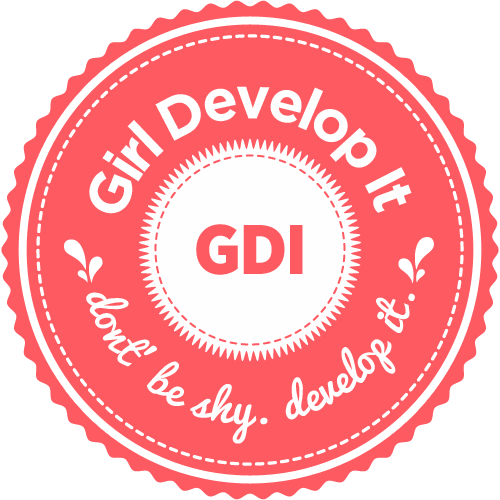
Intro to Rails
slides: http://gdibtv.github.io/gdi-rails
Welcome!
Girl Develop It is here to provide affordable and accessible programs to learn software through mentorship and hands-on instruction.
Some "rules"
- We are here for you!
- Every question is important
- Help each other
- Have fun
What we will cover today
- Homework review
- Write user stories for new app
- Plan app architecture
- Build models
- Build data associations
Homework Discussion
Questions?
Best Song App
Description
An application that lists artists and allows users to vote for their favorite songs by artist, and suggest new songs to vote on.
User Stories
- Stories guide development- how will your product be used?
- Should be for small, testable features
- Written with input from the stakeholders
- Formal format is: As a (role) I want (goal) so that (reason).
- Give them a priority ("required", "nice to have", "v2")
- Give them an estimated time/size (how hard will this be to do?)
- During the project, stories may change, be broken into smaller pieces, be re-prioritized or re-estimated
User Story Examples
- As a user, I can backup my entire hard drive.
- As a user, I can indicate folders not to backup so that my backup drive isn't filled up with things I don't need saved.
- Parking passes can be paid via credit cards.
- Students can only enroll in seminars for which they have prerequisites.
Best Song App User Stories
????
App Architecture
- Models
- Data Associations
- Controllers
- Views
What do we need?
Let's Build an App!
Generating Models
$ rails generate model Artist full_name:string
$ rails generate model Song title:string artist:belongs_to
$ rails generate model Vote song:belongs_to
Migrations
Generating models also generated database migrations for us. Let's check them out and make sure they list the attributes we want.
Migrations
Let's add 'current hairstyle' attribute to Artist table!
Since the migration hasn't been run yet, we can just edit it to add the new column.
def change
create_table :artists do |t|
t.string :full_name
t.string :current_hairstyle
t.timestamps
end
end
Ok, now that it looks good, run the migrations.
$ rake db:migrate
Migrations
- Migrations describe changes that will be made to the database.
- They use a Ruby DSL so you don't have to write SQL.
- Each migration modifies the database's schema, which you can see in your db/schema.rb file.
Migrations
It would be pretty cool if songs has an attribute called 'optimal volume'. Let's create a migration to add that to the table. Run this in the terminal:
$ rails generate migration AddOptimalVolumetoSongs
And this will be the migration file it generates, with your additions:
class AddOptimalVolumetoSongs < ActiveRecord::Migration
def change
add_column :songs, :optimal_volume, :string
end
end
Sweet. Now run the migration ('rake db:migrate') so the schema is up to date.
Let's Develop It!
Generate a migration to add a column called 'hometown' with a type of 'string' to the Artists table.
Data Associations
The second part of building data associations is in the models.
class Artist < ActiveRecord::Base
has_many :songs
end
class Song < ActiveRecord::Base
belongs_to :artist
has_many :votes
end
class Vote < ActiveRecord::Base
belongs_to :song
end
Data Associations
Rails supports six types of associations:
- belongs_to
- has_one
- has_many
- has_many :through
- has_one :through
- has_and_belongs_to_many
Note: the last two are not used very often.
Associations in more detail...Data Associations
belongs_to
This sets up either a one-to-one or one-to-many model with another mdoel.
- If order belongs to customer, each order can be assigned to exactly one customer.
- In the order table, there will be an entry for 'customer_id: integer'.
- The order model will say 'belongs_to :customer'. Note that 'customer' is singular!
- The customer model will need to either 'have one' or 'have many' orders.
Data Associations
belongs_to
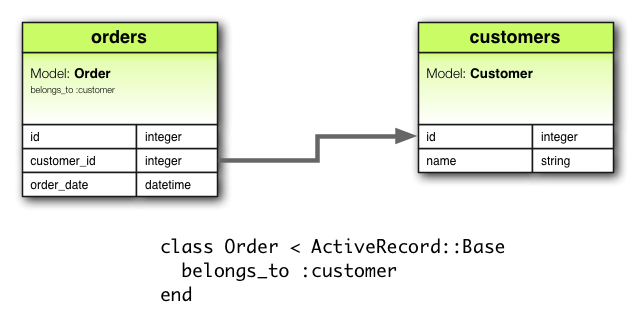
Data Associations
has_one
This sets up a one-to-one connection with a another model.
- if supplier has one account, each supplier can have exactly one associated account.
- in the supplier table, there will not be a reference to accounts.
- the supplier model will say 'has_one :account'. note that 'account' is singular!
- the account model will need to 'belong to' supplier.
Data Associations
has_one
class Supplier < ActiveRecord::Base
has_one :account
end
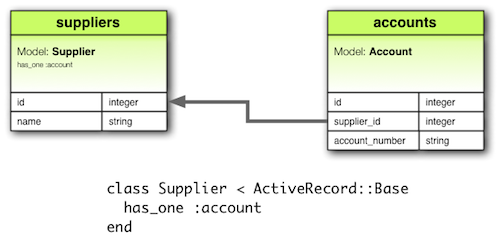
Data Associations
has_many
This sets up a one-to-many connection with another model.
- If customer has many orders, each customer may be associated with zero or more orders.
- In the customer table, there will not be a reference to orders.
- The customer model will say 'has_many :orders'. Note that 'orders' is plural!
- Orders will need to 'belong to' customer.
Data Associations
has_many
class Customer < ActiveRecord::Base
has_many :orders
end
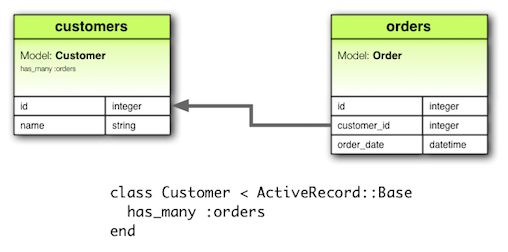
Data Associations
has_many :through
This sets up a many-to-many connection to another model, through a third model.
- A patient can have many physicians through an appointment and a physician can have many patients through an appointment.
- In the appointments table, there will be an entry for both physician_id and patient_id.
- The appointment model will say 'belongs_to :physician, belongs_to :patient', and the patient model will say 'has_many :appointments, has_many :physicians, through: :appointments'.
Data Associations
has_many :through
class Physician < ActiveRecord::Base
has_many :appointments
has_many :patients, :through => :appointments
end
class Appointment < ActiveRecord::Base
belongs_to :physician
belongs_to :patient
end
class Patient < ActiveRecord::Base
has_many :appointments
has_many :physicians, :through => :appointments
end
Data Associations
has_many :through
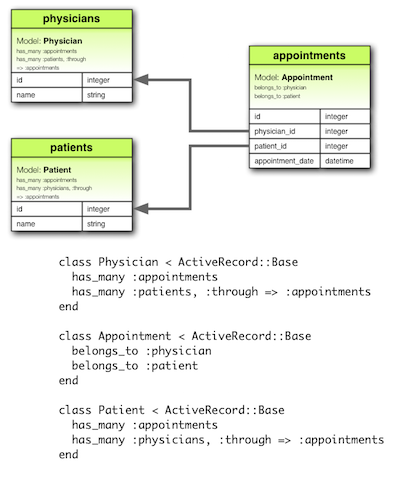
Data Associations
has_and_belongs_to_many
A has_and_belongs_to_many association creates a direct many-to-many connection with another model, with no intervening model. For example, if your application includes assemblies and parts, with each assembly having many parts and each part appearing in many assemblies, you could declare the models this way:
class Assembly < ActiveRecord::Base
has_and_belongs_to_many :parts
end
class Part < ActiveRecord::Base
has_and_belongs_to_many :assemblies
end
Data Associations
has_and_belongs_to_many (habtm)
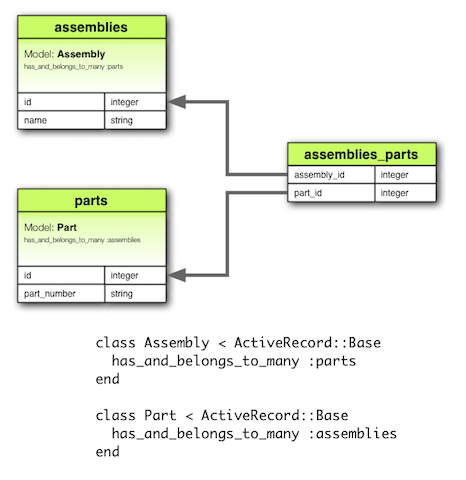
Data Associations
Choosing between has_many :through and habtm
- Set up a has_many :through relationship if:
- You need to work with the relationship model as an independent entity
- Set up a has_and_belongs_to_many relationship if:
- You don’t need to do anything with the relationship model
You will need to remember to setup the intermediate table in the database
Data Associations
Index
A database index is a data structure that improves the speed of data retrieval at the cost of more storage space. An index is a copy of the selected columns, which can be searched very efficiently.
Data Associations
Index
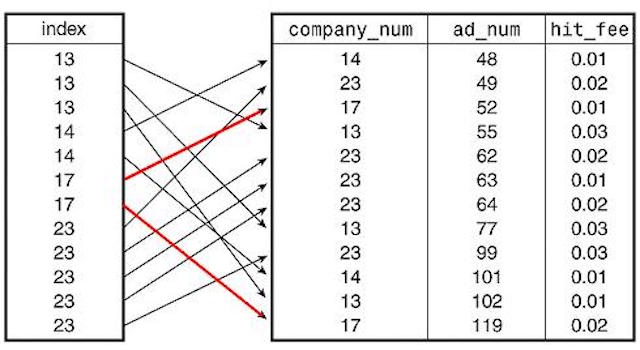
Summary
Today we did this:
- Planned our application by writing user stories
- Discussing the architecture
- Then, we generated the model
- And hooked up the associations
Questions?
Homework 1
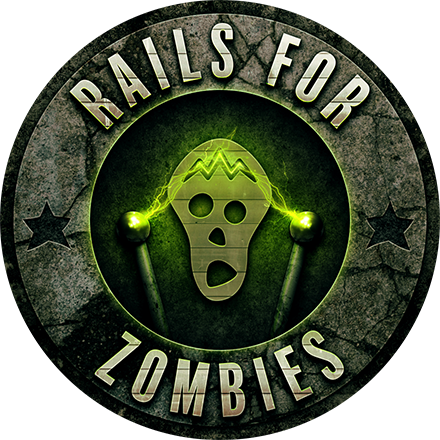
Homework 2
Use Rails Console with your Best Song App
Try some commands
- Create records
- Search for records
- Update record attributes
- Delete records
- Associate some record with another one